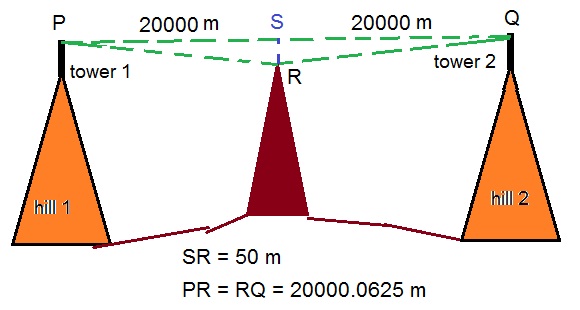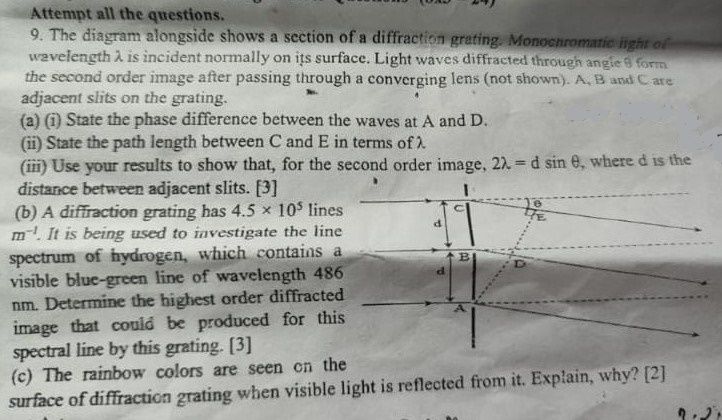CBSE Class 12-science Answered
two towers on top of hills are 40 km apart . the line joining them passes 50 m above a hill halfway
between the tower .what is the largest wavelength of radio waves ,what is the larges wavelength of radio waves ,which can be sent between the towers without appreciable diffraction effects
Asked by vinodjoshi112233 | 07 Dec, 2017, 08:40: PM

Answer to the problem is to find out the path difference between the direct transmission path ( PSQ) and the reflected transmission path(PRQ).
The path difference can be calculated as 125 cm.
To avoid diffraction effect it is required to have constructive interference between the direct radio wave and the reflected radio wave at Q.
For this, the path difference should be nλ, where n is integers and λ is wavelength of raido wave transmitted.
Hence λ of radio wave should be integer multiple of 125 cm
Answered by | 08 Dec, 2017, 12:33: PM
Concept Videos
CBSE 12-science - Physics
Asked by prachis14 | 06 Mar, 2023, 04:49: PM
CBSE 12-science - Physics
Asked by suman.sh01 | 21 May, 2022, 11:09: AM
CBSE 12-science - Physics
Asked by arjunsah797 | 14 May, 2022, 01:34: PM
CBSE 12-science - Physics
Asked by sirib942254 | 04 Aug, 2021, 08:30: PM
CBSE 12-science - Physics
Asked by ramdasiyogesh2001 | 12 Mar, 2021, 12:47: AM
CBSE 12-science - Physics
Asked by dsdeepak487 | 27 Feb, 2020, 06:06: PM
CBSE 12-science - Physics
Asked by Abhineet | 26 Nov, 2019, 02:04: AM
CBSE 12-science - Physics
Asked by Abhineet | 26 Nov, 2019, 02:03: AM
CBSE 12-science - Physics
Asked by vanshrathod71 | 30 Jan, 2019, 12:38: PM
CBSE 12-science - Physics
Asked by Topperlearning User | 13 Jun, 2014, 07:29: AM







